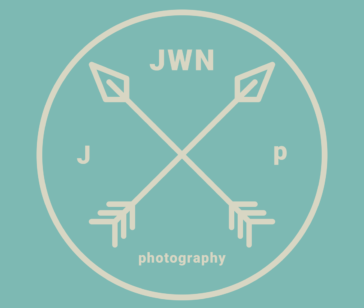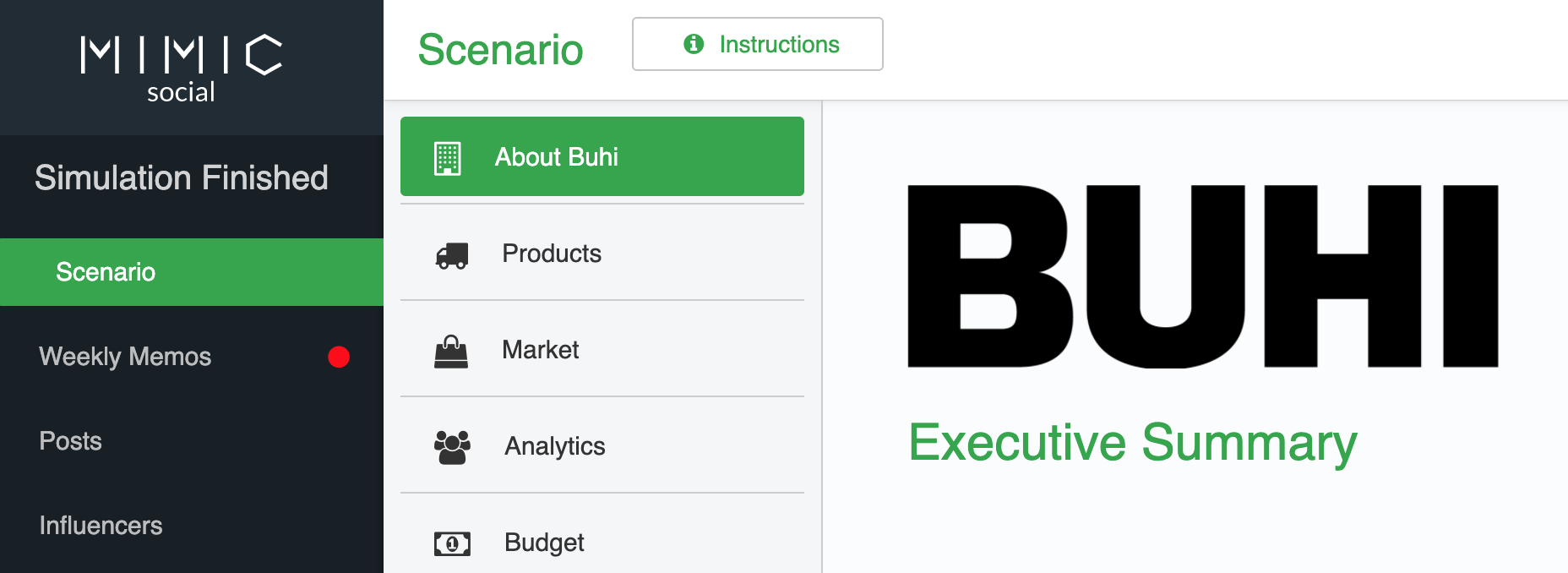
Mimic Social Reflection
For my social media marketing class we had to do a social media marketing campaign through Mimic social.In this simulation you are the marketing manager for a fictional company called: Buhi bags. The goal is to do market research of your competition Herschel Supply Co. By doing an audit of their social media accounts we got an idea of who their target audience is, what type of content they post, what times of day they post, what content provides the most engagements between them and their followers and on which social media channels. The point of the audit was to find which strategies worked and which ones didn’t. It was important to apply those strategies that performed well to Buhi bags social campaigns. There are 12 rounds in this simulation, each round is combined into two parts: social media posts, and a reflection on how those analytics preformed for that week. One week takes up 2 rounds, each week there is a new goal you must meet so your posts and marketing strategy must change to meet those goals.
What the simulation taught me
Overall i thought the simulation was a great tool to use to experience what social media marketing is like in real life. I thought the simulation was realistic and the analytics were true to the posts. It gave true insight on:
- Understanding buyer persona:
The First step before advertising was choosing a target market that you wanted to direct posts to. Mimic social did a good job providing a variety of buyer personas to choose from. Each buyer persona included age, gender, income, interest, and the percentage of the market they make up. If you target an audience that makes up a small percentage of the market, don’t know their interests, or simply target the wrong audience you will lose a lot of money and go unrecognized.
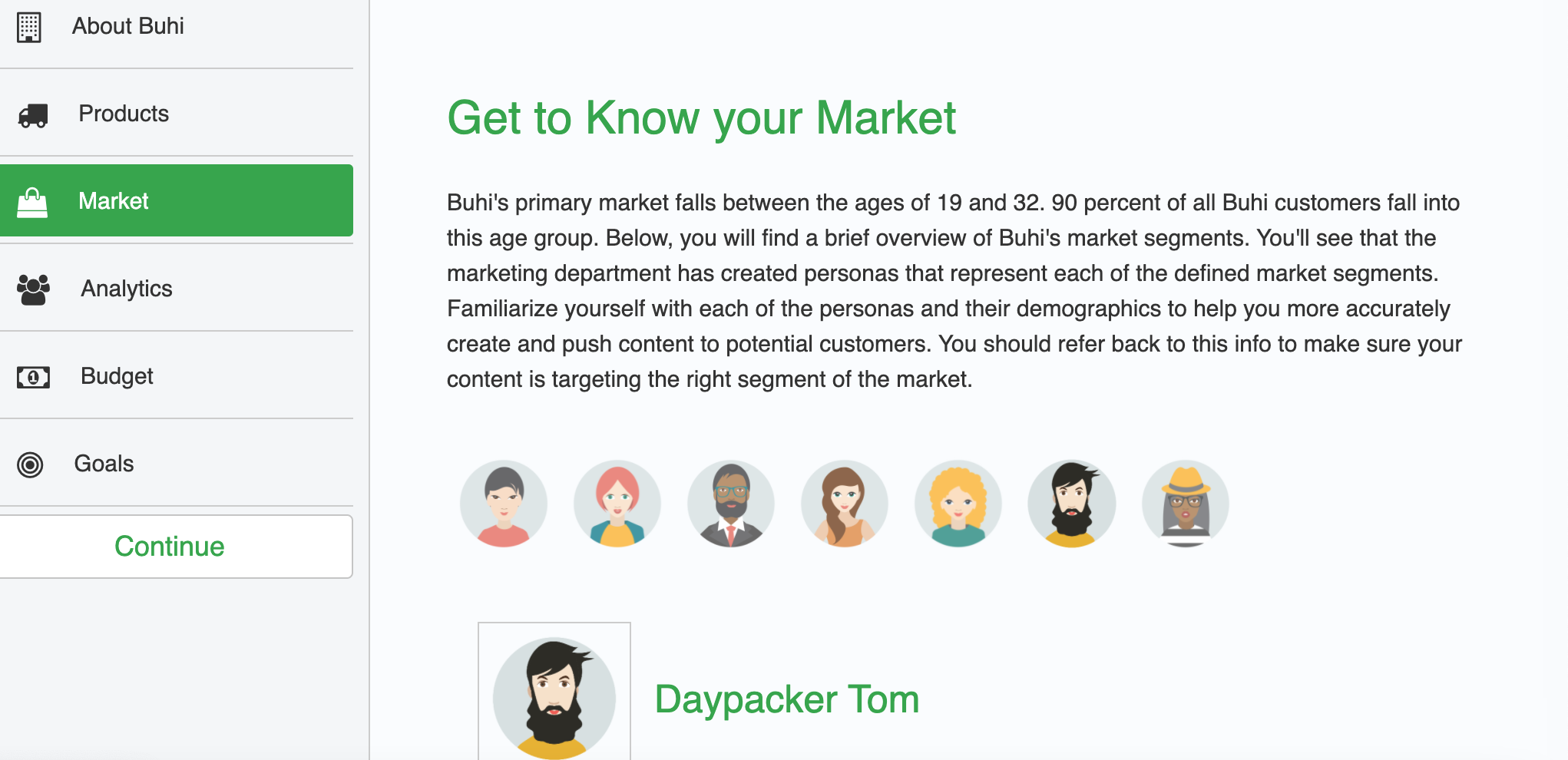
2. Posts:
Running A & B testing on each social channel is crucial to finding out which channel you can best reach your audience. Do this by creating similar posts on each channel at the same time of day, and same day of the week. In general certain channels outperform the others so it’s important to know which metrics to track.
- Pinterest is great for organic reach, clicks, shares, and sales
- Instagram is great for engagements: likes and comments.
- Facebook, Twitter, and Youtube are good for sales via promoted posts
- Twitter is a good channel to receive clicks and shares.

3. Metrics to track:
Awareness; Followers, impressions, mentions.
- Educational and informative posts retaining to your brand are best for building awareness. In this case it was informational blog posts such as travel guides or fashion blog posts.
Engagements: Comments, reactions, shares, clicks.
- I found that captions that contained questions encouraged customers to share, tag, comment, and have conversations on posts.
Sales: conversions, purchases, revenue.
- Posts that had holiday images and the word “sale” or “20% off” performed best in increasing sales.
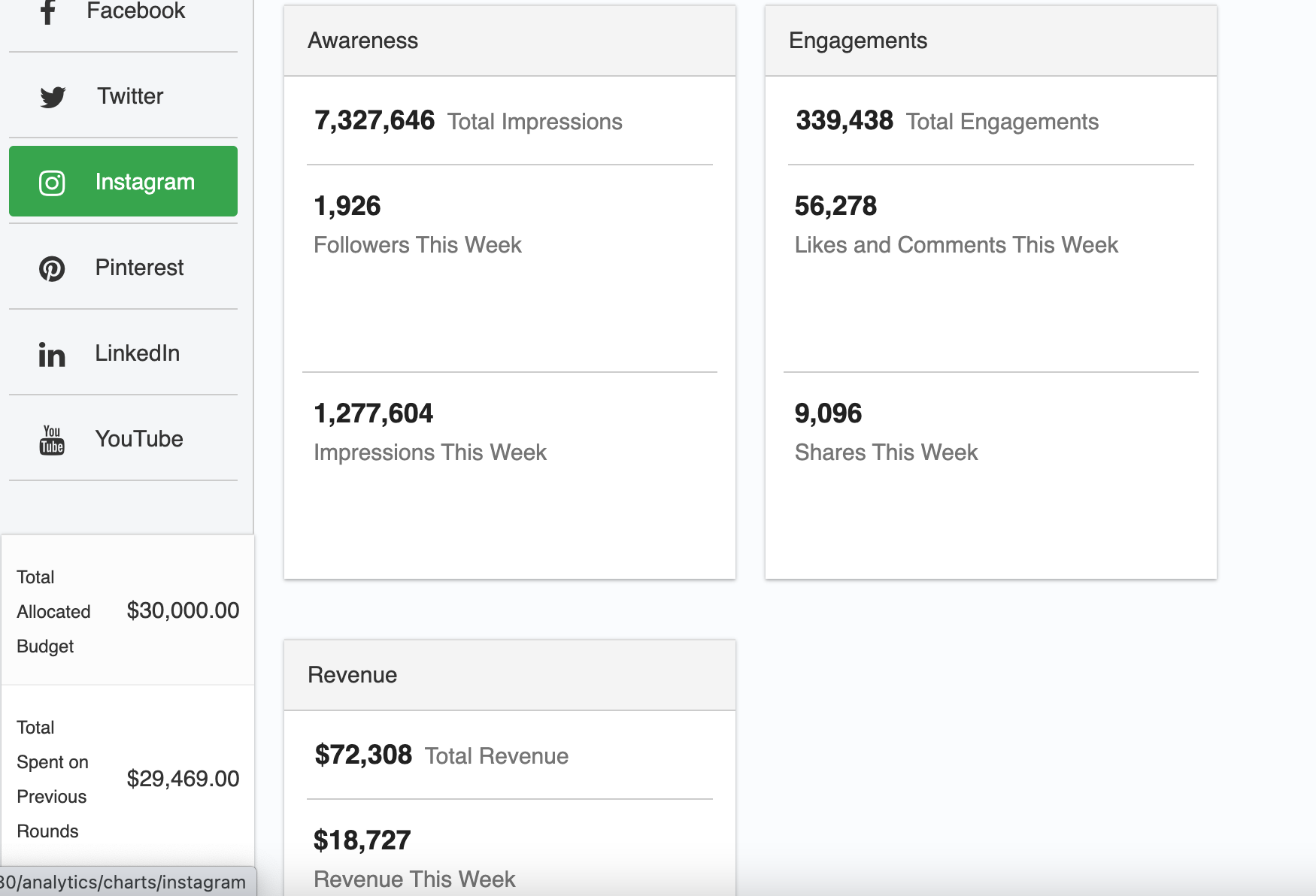
It’s important for a company to build brand awareness before they try to advertise. If a company advertises to soon or too much it may result in a loss of money and little to no revenue gained. That’s why it’s important to know which metrics to track and what kind of content to post for each metric, on each social channel. Posts on all channels should follow the 80-20 rule. This means that 80% of your posts should be educational, informative, and non promotional, 20% of posts should be promotional or advertisements. Everything you post must add value to the customer and peak their interest, you are guiding them through their buyers journey and convincing them of why they should choose your company.
4. Influencer marketing:
In later rounds when we had to hire an influencer who we thought would best reach our target audience. My strategy was to stick to those interested in travel because they seemed to have the greatest ROI for Buhi bags. Most influencers want to support your product and believe in it. You can’t just tell them what to say or do. It didn’t take long to find out how expensive influencers can be. For a macro influencer a single post can cost $2,000-$3,000. With a weekly budget of $5,000 you have to be careful with your marketing strategy. In real life this amount would be too much and wouldn’t make sense for most business unless they could afford it.
There are three different classifications of influencers.
- Mega- Usually a celebrity with millions of followers and could cost around $20,000 or more per post.
- Macro- Still have a very large reach but appeal to a more targeted audience.
- Micro- Marketing local content to a narrow audience
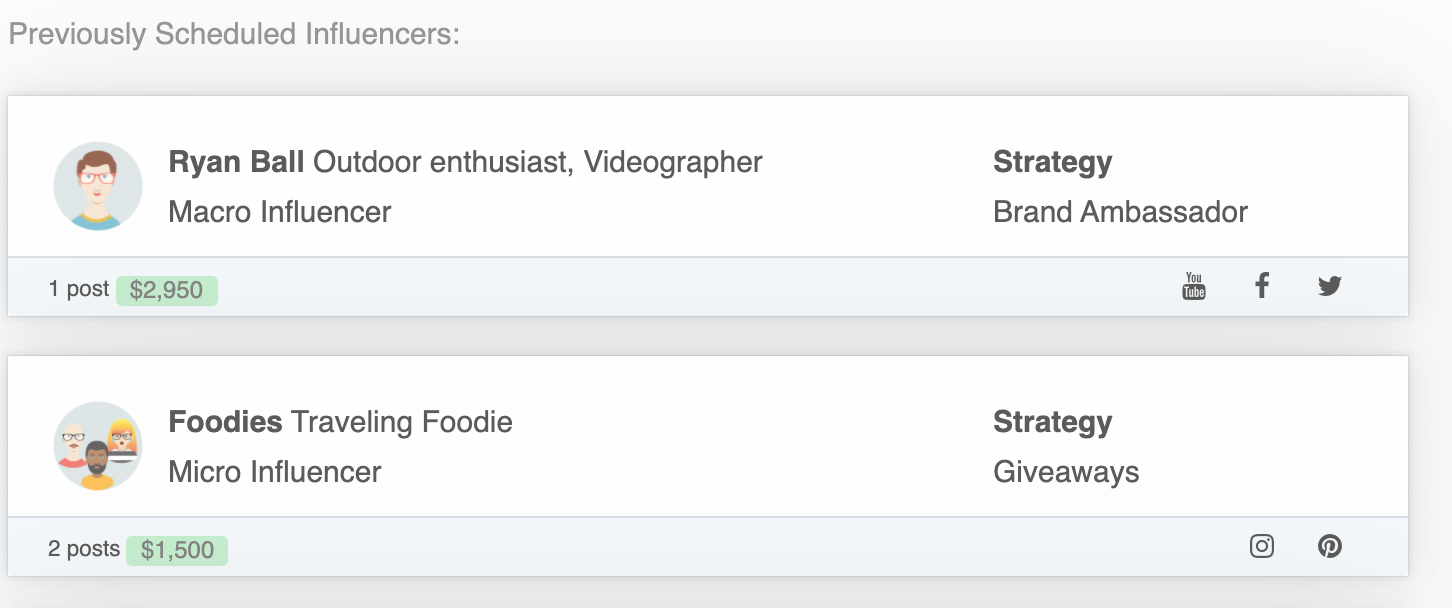
ROI- I found return on investment was best achieved when using certain language such as “sale”, “20% off”, “black friday sale” in the caption with holiday photos and running them as promotional ads. For example: below shows a post created around the time of Halloween with a exclusive black and orange bag with the caption “trick or treat.”

Through the 12 rounds the total budget spent was $30,000.00 and the total revenue was $186,050.00 leaving a total return on investment of $156,050.00.
What could be done differently
If i were to do the simulation again i would apply what i’ve learned from social media strategies and from the mimic pro simulation to make some changes. I would run A & B testing on the first round in order to see which content and strategies work the best. I would posts twice a day on Instagram and Facebook and 8-10 times a day on Pinterest and Twitter. I wouldn’t post many infographics or blog post because they didn’t perform well, i would put those resources to posting pictures and videos. Having a posting schedule helped to make sure your posting at the same times on the same days resulting in consistent analytics.
Improvements to mimic social
I think Mimic social was very realistic, if i had to change a few things i would suggest they provide better blog posts and infographics. In real life educating your customers is important for brand awareness and the analytics in mimic social didn’t reflect that. I would also suggest that they have more content posts to choose from, especially holiday posts, as your posting between 20-40 posts each week and you have to use some of the same content.
Conclusion
Overall i found the simulation to be very educational I learned what channels to post on to reach certain demographics and which channels are good for engagement, awareness and sales. I learned the number of posts that are appropriate to share each day, the times that are most popular, the days that are the best to post. I learned that marketing is about building brand awareness and trust before you can ask a customer to buy from you. I learned how to budget and how to spread it out in order to achieve the largest return on investment. I would recommend this simulation to those entering digital marketing and small business owners that want to learn how to build their brand.
